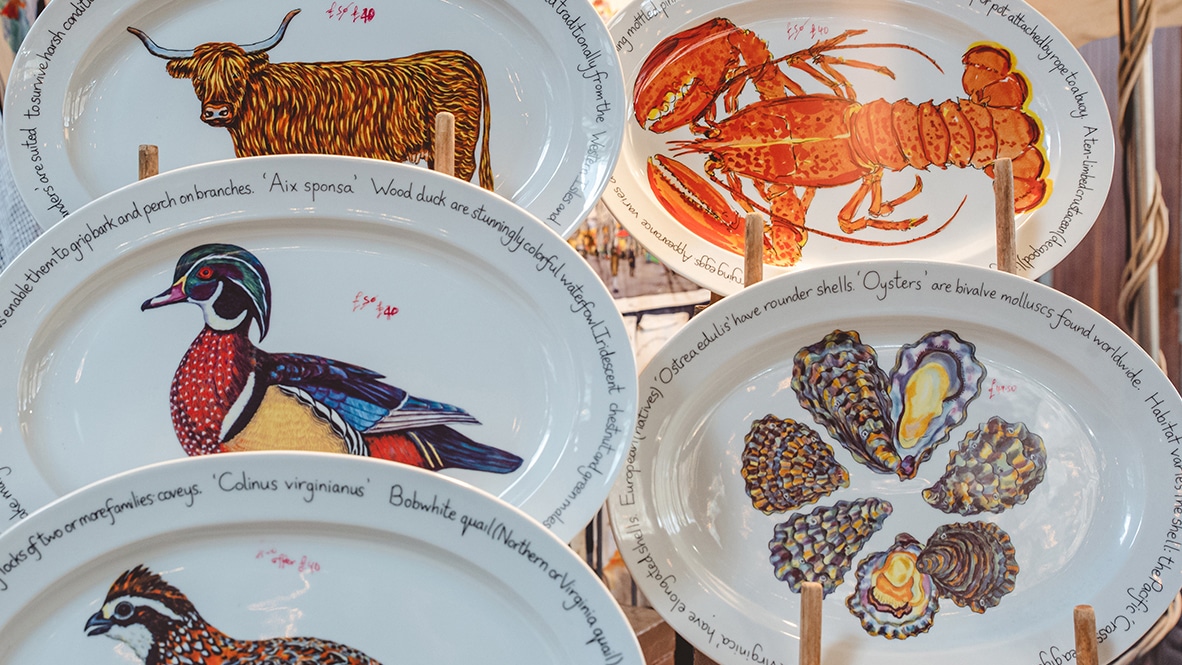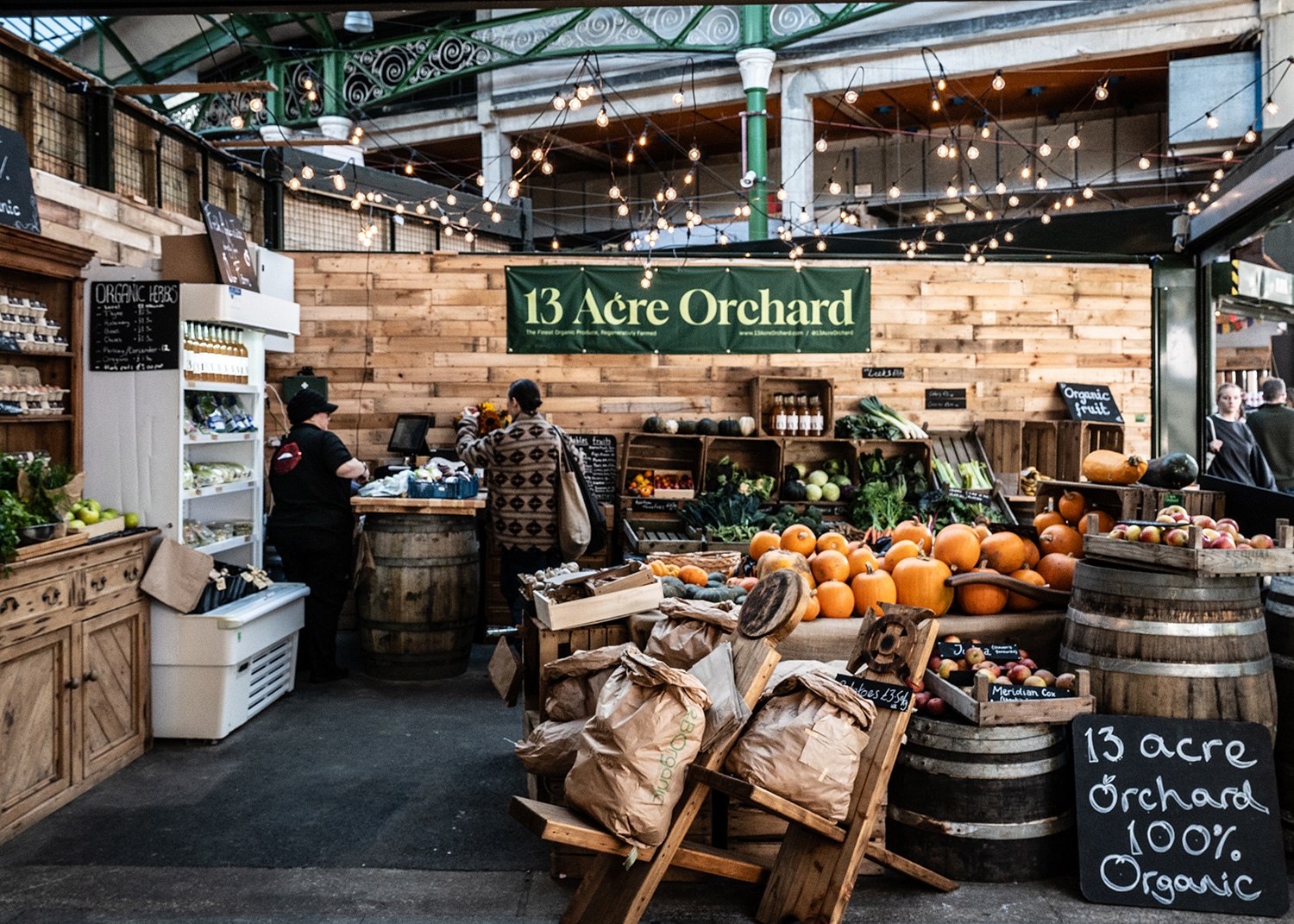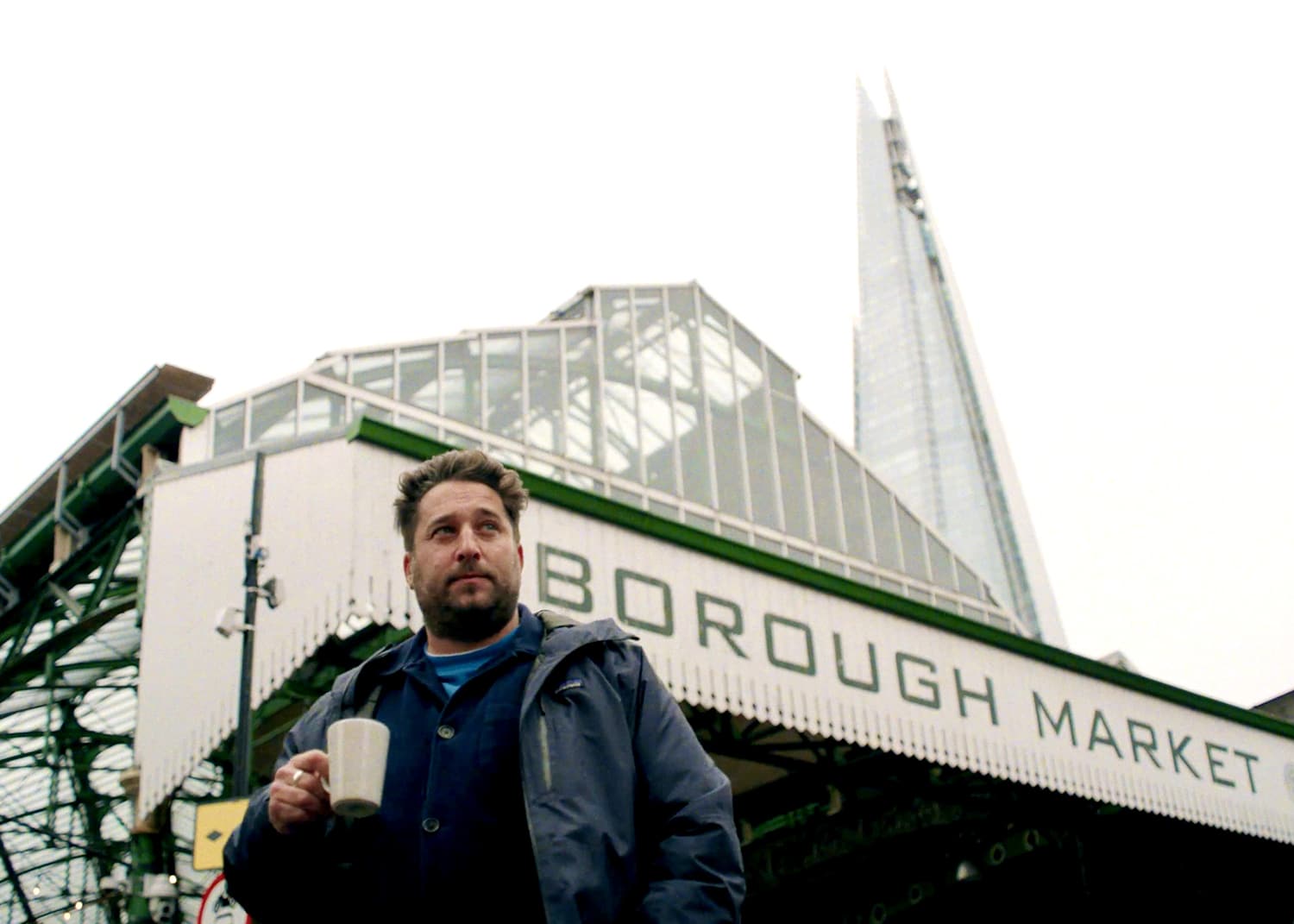Q&A: Henrietta Green
The woman whose Food Lovers’ Fair kicked off the transformation of Borough Market talks about local tradition, youthful naivety and the insidious creep of homogeneity
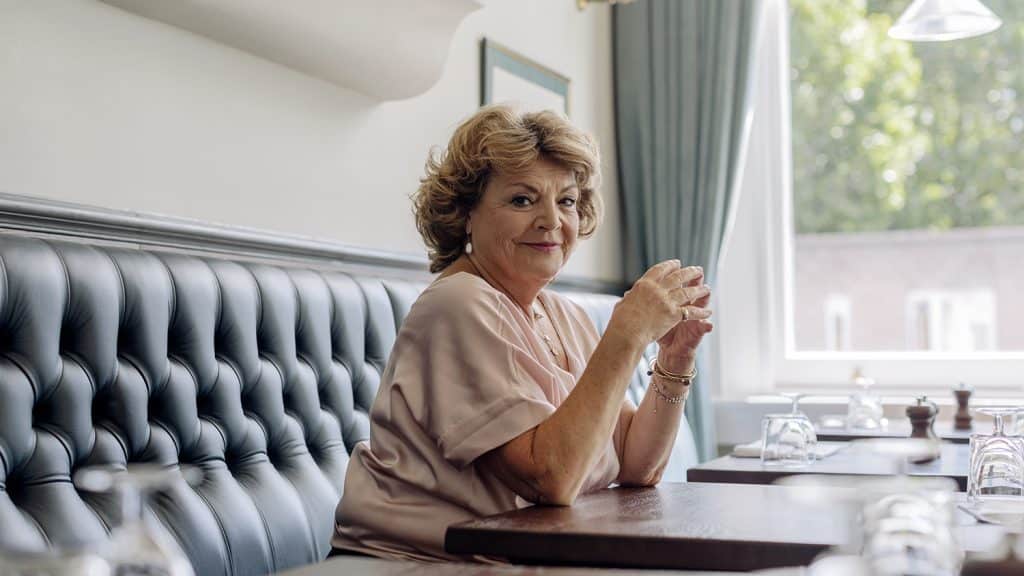

“PEOPLE CAME FROM MILES AROUND. WHO THEY WERE, I JUST DON’T KNOW. IT WAS LIKE RAIN ON A DESERT”
Interview: Mark Riddaway / Portrait: Orlando Gili
In the modern history of Borough Market, there have been few figures more pivotal than Henrietta Green. Her formal relationship with the Market may have been brief and – as she readily attests – not without its tensions, but her influence still pervades. After a previous career in theatre, film and advertising production, and another as co-founder of the Graham & Green homewares boutique, Henrietta carved out a niche as a knowledgeable and energetic advocate for traditional producers of high-quality British food, most notably through her ground-breaking Food Lovers’ Guide to Britain, which was first published in 1993. In November 1998, as part of the annual Southwark Festival, she arranged for more than 50 of her favourite British producers to join some of Borough Market’s more progressive wholesalers for a three-day Food Lovers’ Fair. Its overwhelming success was instrumental in persuading the Market’s trustees that a regular retail market could offer a route out of the seemingly terminal decline faced by this famous institution as demand for fruit and veg wholesale atrophied. Many of Henrietta’s traders would go on to form the core of the new retail market. Some, including Neal’s Yard Dairy, Monmouth Coffee Company, Wild Beef, Mrs Kings Pork Pies, New Forest Cider (a precursor to The Cider House) and Ginger Pig, are still here today.
Was good food a feature of your youth?
No, the food was pretty grim in our house. I was brought up in London, very near St John’s Wood high street. We had a housekeeper-cook whose aim in life was, I think, to ruin everything: wonderful ingredients, cooked beyond recognition. I was brought up rather grandly in a very large house. There were quite a lot of staff: cooks and butlers, nannies and drivers. I never ate with my parents – we ate in the nursery, they ate downstairs in the dining room. One Sunday, I remember having our nursery lunch when this unbelievable golden apparition appeared at the table. I remember biting into it, and it being juicy and slightly gamey – a completely different flavour to anything I’d ever had. It was roast chicken. In those days, chicken was very unusual, a great luxury. There was a huge furore – the cook had sent us the wrong dish; my parents were meant to be getting that golden chicken, not us.
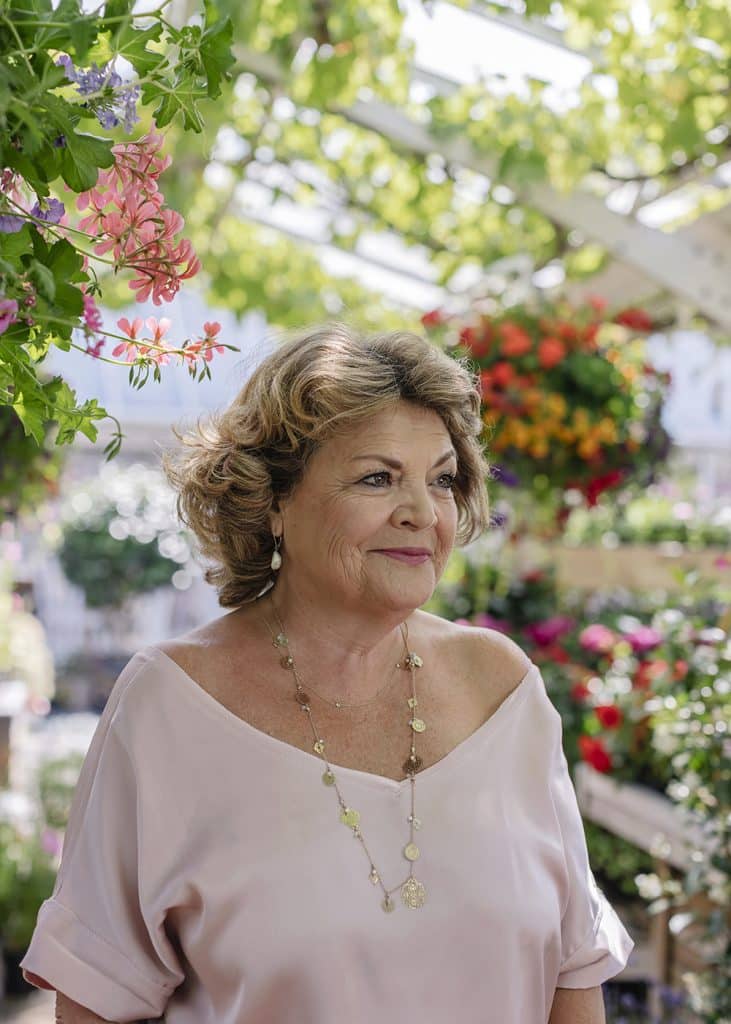
So, how did your obvious love of food emerge?
When I was about four, I went to France with my parents. Caroline, the French cook, used to take me to the market every day. I’ll never forget my first visit to the market at Cannes. I have since that day been absolutely fascinated by markets. I remember being hit by the smell – the muskiness, the slight dampness from people spraying their fruit in the heat, the sweetness of the fruit ripening, the saltiness of the fish. The scents were just unbelievable. One of the strongest memories I brought back from France was of a sauce that Caroline made with tomatoes from the market: I was just spellbound by the richness and warmth you got out of them. I’ve never forgotten that. When I was eight or nine, I found myself alone in the kitchen and I wanted to recreate that memory. I thought, I’m going to make that rich tomato sauce myself, and I just cooked it completely instinctively. I knew I had to boil them down to make them thick and put sugar in to make them sweet. My mother had never knowingly cooked in her life, but I embraced it immediately.
When you struck out into the world of food, it was initially as a writer of recipe books. How did you end up becoming an expert on British food producers?
I got a job, purely by chance, which completely changed my attitude to food. I was taken on as consultant to a new restaurant called The British Harvest at the Hilton on Park Lane. It was so ahead of its time. This was 1984 maybe. The first thing they asked me to do was go off and come back with 100 traditional British recipes, but I didn’t want to do that. What I thought we should be doing is getting the best seasonal ingredients we possibly could, from very specific places, and cooking them in a bright young style, with a nod to Britishness. So, that’s what we did. We had a board of unpasteurised British cheeses, which raised a lot of eyebrows at the time. We had three or four different native oysters from different waters. We got our apples from Brogdale. I rang up the Rare Breed Survival Trust and said we’d like a different rare breed of lamb each month, from a different region, but they told me, “Oh no, we don’t eat them, they’re rare.” And I said, “Well unless something happens to them, they’re going to get even rarer.” Eventually I managed to meet with the trust’s chairman, who was a wonderful man, and he managed to see what I was getting at. That job was so good for me, it really opened my eyes. I was fighting red tape a lot of the time and eventually got fired because I refused to do something, but I didn’t care. I had my vision. We could have achieved so much more – the restaurant got a lot of publicity, but it didn’t do very well.
Your ground-breaking books, British Food Finds and Food Lovers’ Guide to Britain, introduced chefs, buyers and the British public to a vast array of traditional, small-scale producers. What inspired you to start collating those directories?
I remember being invited on a press trip up to the Lake District by this incredibly dynamic PR officer for the English tourist board. We were introduced to all the local specialities. It was just absolute heaven. I met this wonderful man called Richard Woodall, who produced quite wonderful ham. It was just extraordinary. I thought, I have to do something with this. The food was what grabbed me – first and foremost, it had to be good – but then it was also the people behind it, the stories behind it, the integrity, the sense of connection. So, I started collecting. I was beginning to see the change, the insidious creep of homogeneity, and I wanted to help these people fight against it.
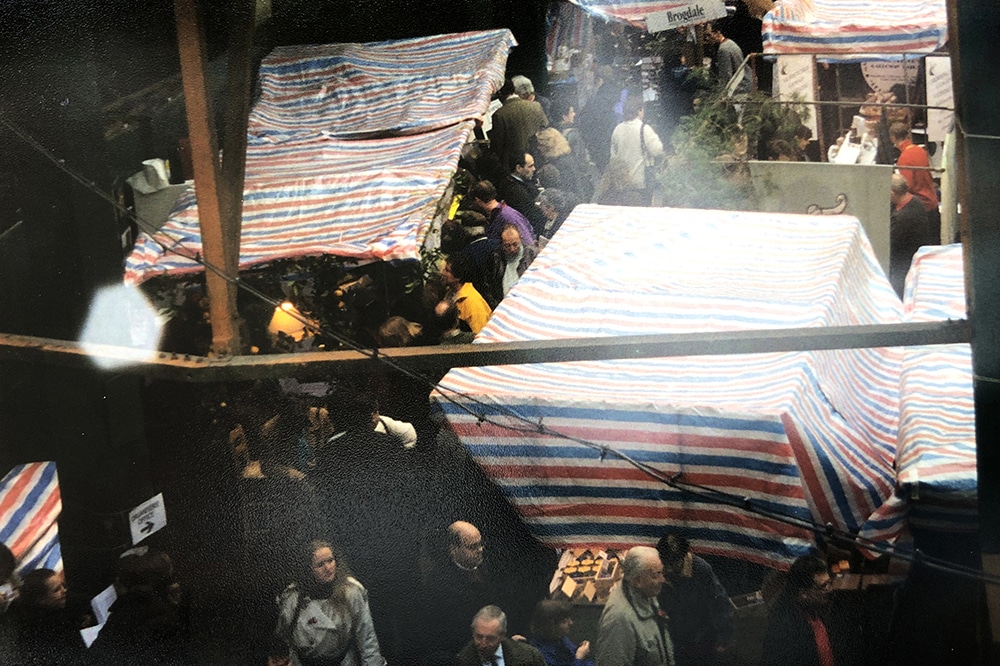
Where did the idea of a Food Lovers’ Fair come from?
I had been to America and seen the farmers’ markets there, and I was completely rivetted. I campaigned for many a year to get farmers’ markets going over here, but without much success. Then, after I had written the Food Lovers’ Guide, I was approached by a property company that at the time owned St Christopher’s Place, off Oxford Street. They asked me if I would do a market there. It coincided with the publication of the second edition of the guide, so I chose 25 of the top producers from my book and invited them to come and take a stall, and it was a great success. Randolph Hodgson from Neal’s Yard Dairy was one of those producers. He told me he was moving to Borough and said that we should do a food fair there. Three years later, that’s what we did, as part of the Southwark Festival. The Market in those days was a pretty grim, dusty place. Randolph and some of the other wholesalers had done a couple of ‘open days’, where they had sold direct to the public, but nothing quite like this had been tried there before.
What did you want that weekend at Borough to be?
I had a pretty clear vision for the market. It was quite instinctive. I couldn’t always articulate it, but I knew what it should be. I had formed an advisory committee, but as someone wise once said, a committee should always have an uneven number on it, and three is too many. As the date approached, we were struggling to get enough producers, but I wouldn’t compromise. I could see everyone else thinking that I was just being difficult, but looking back, that control was so important. I wanted to create a fair where people would walk from stall to stall and say, “I can’t believe it, this is heaven.” It was a quest for excellence, unusualness, integrity – proper food made in the proper way with the proper ingredients.
What are your memories of the fair itself?
At quarter to 10 on the Friday morning, I was standing in the main hall. It was grimy, it was dark, there was rain dripping on the traders. I remember standing there with my heart thudding, thinking, what have I done? I’ve brought together these 50 people, they’ve travelled for miles, they’ll sell nothing, they’re going to lynch me. But by 12 o’clock, several producers had sold out their entire weekend’s stock. Ian from Mrs Kings Pork Pies had brought 900 pork pies, and they’d all gone. The Ginger Pig had never done a market before. They’d brought pigs’ heads and trotters. Completely sold out.
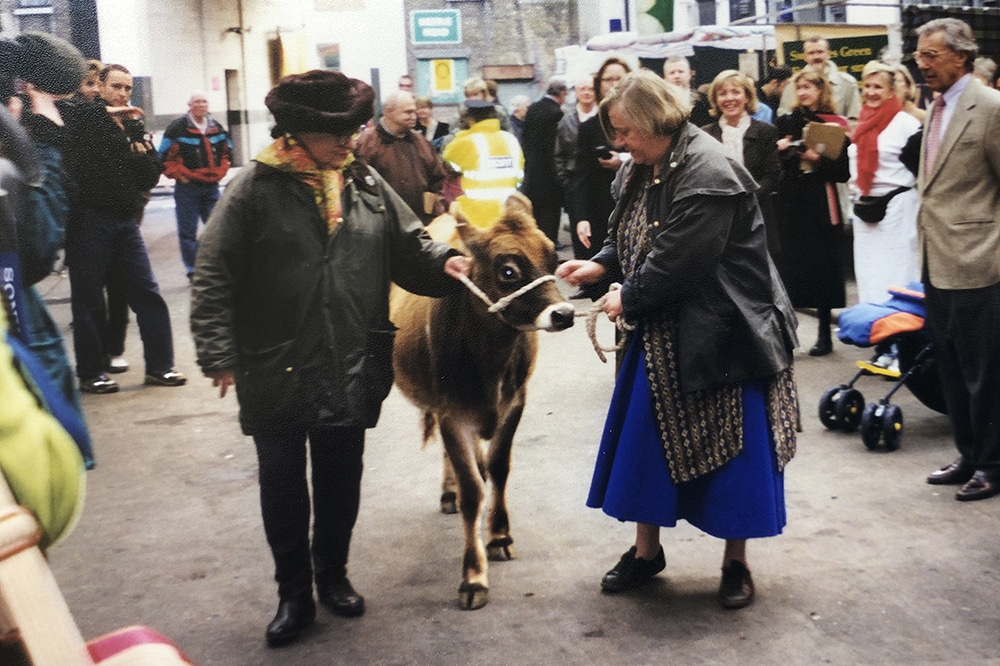
Who came?
People came from miles around. Who they were, I just don’t know. It was like rain on a desert – the appetite was clearly there, but it was completely untapped; the very first farmers’ market had happened in Bath only that autumn, the next one wouldn’t happen until after Christmas. We did get quite a lot of press. I had rung Clarissa and said, “Clarissa, suppose nobody comes…” She was quite famous by this time as one of the Two Fat Ladies. She said, “Do you want me and Jennifer [Paterson] to open it?” That certainly helped. At quarter to 11 on the Friday we had a press call – there was Jennifer with her long fingernails, milking a goat.
One thing that people forget is that Fergus Henderson set up the canteen! It wasn’t much publicised – mainly because he kept disappearing. He had said he would do it, but we couldn’t get any information out of him, so it was a bit touch and go whether he’d come, but it was wonderful having him there: seed cake and madeira at 11am, chitterlings, pork knuckle and a whole Lancashire cheese.
Looking at your career as a whole, what have you been seeking to achieve?
I suppose what I long for is this: I remember going to Slow Food in Turin many years ago and there was a prosciutto crudo tasting, with different cures from all over Italy, six or seven of them. I watched as these three old Italians had this long, terrible and quite hilarious row about which was the best cure. Sometimes you wish for a little more of that here: an informed general public who know the different cures, understand the difference between them, and care enough to argue about them. When it comes to cheese, how many people know the difference between pasteurised and unpasteurised milk? How many people will eat brawn these days? How many eat black pudding? You want that richness, you want that diversity, you want that knowledge. Without diversity, without knowledge, what you’re left with is blandness. Blandness is the biggest danger, and it’s one we need to fight against constantly.
